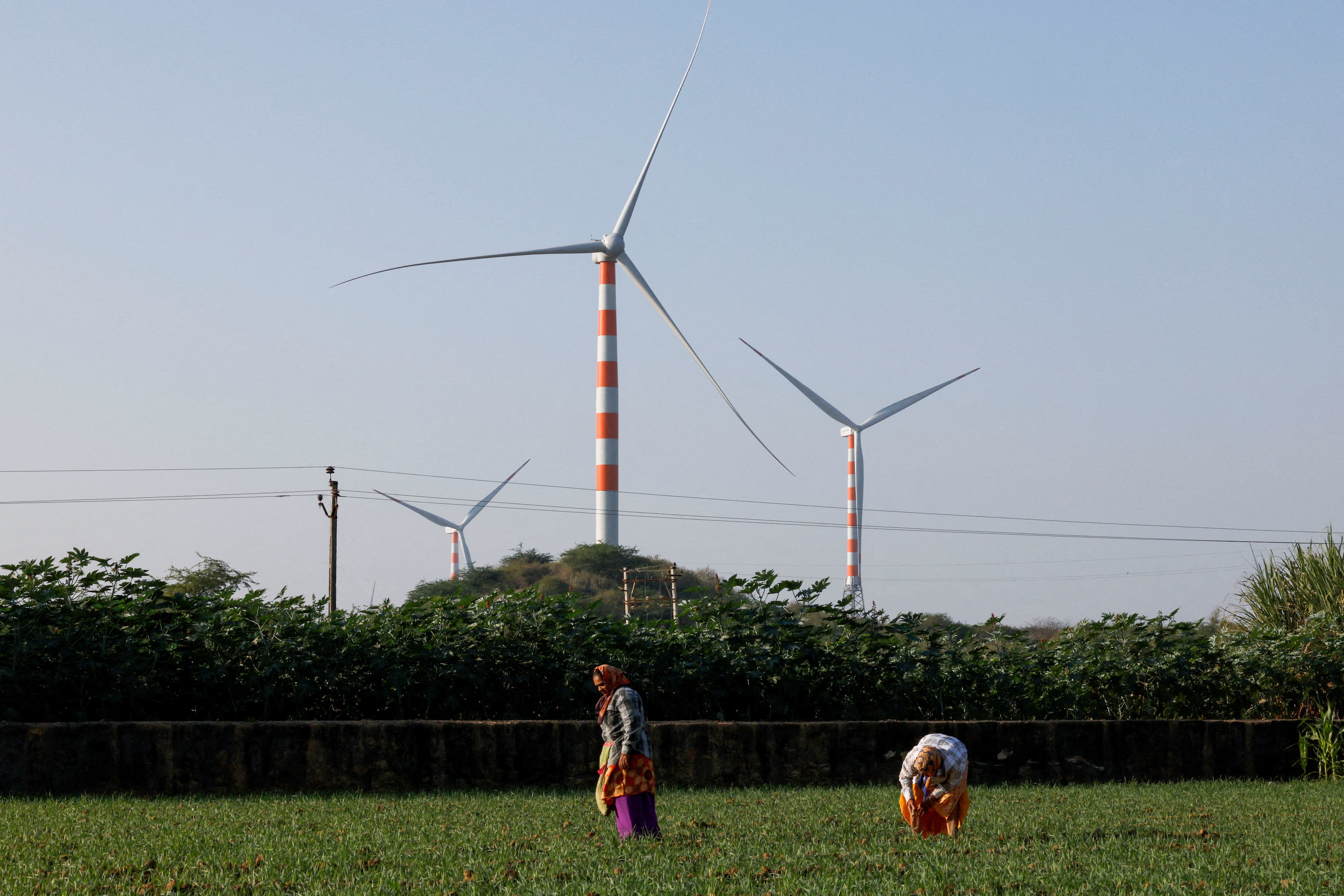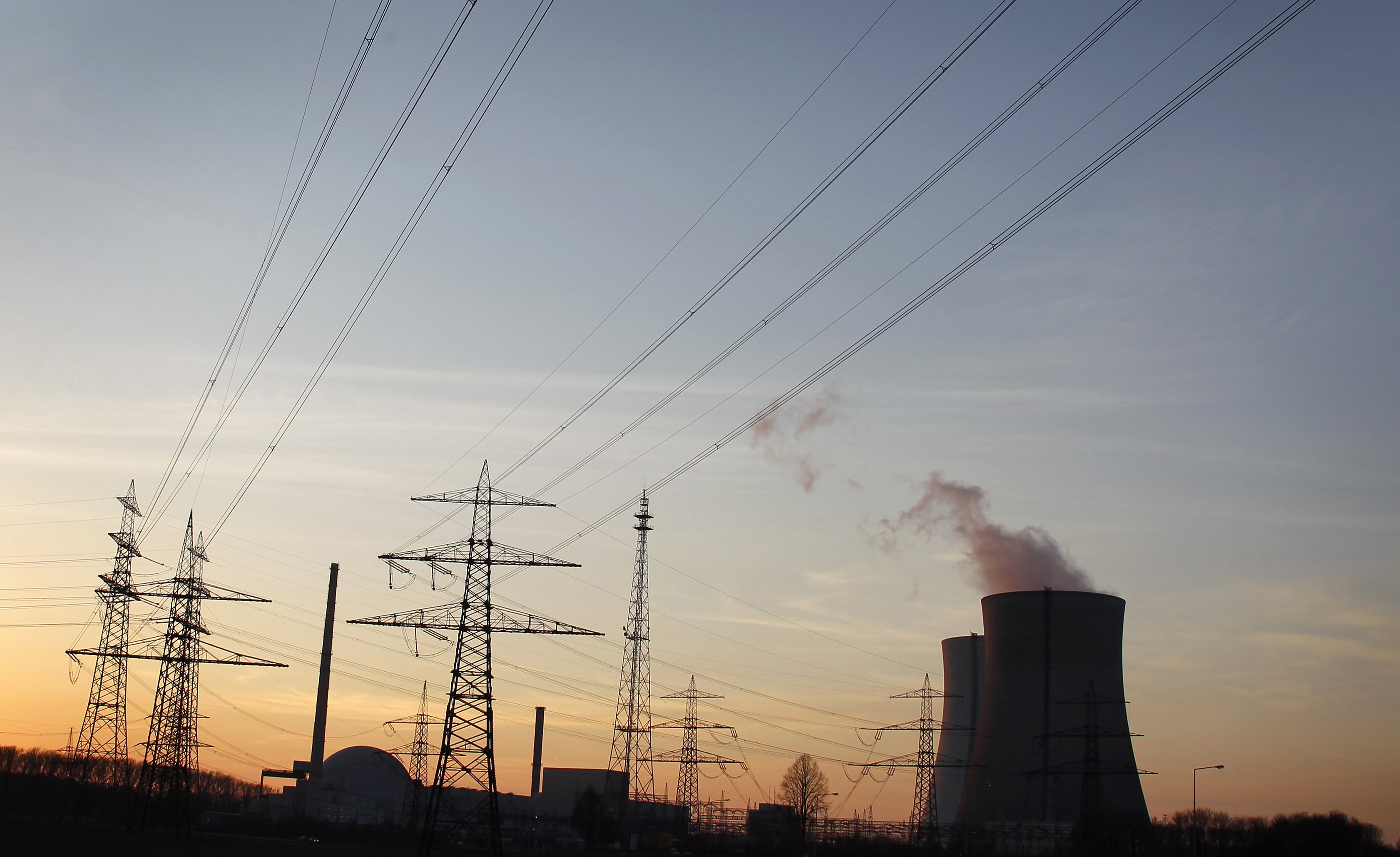4 ways to store renewable energy that don’t involve batteries
Renewable energy cannot provide steady and interrupted flows of electricity – making energy storage increasingly important.
Image: Unsplash/thomasrichter
Stay up to date:
Accelerating Clean Hydrogen
Listen to the article
- The world is set to add as much renewable power over 2022-2027 as it did in the past 20, according to the International Energy Agency.
- This is making energy storage increasingly important, as renewable energy cannot provide steady and interrupted flows of electricity.
- Here are four innovative ways we can store renewable energy without batteries.
Giant bricks are not what most people think of when they hear the words “energy storage”, but they are a key element of a gravity-based system that could help the world manage an increasing dependence on renewable electricity generation.
Global renewable capacity could rise as much in 2022-2027 as it did in the previous 20 years, according to the International Energy Agency. This makes energy storage increasingly important, as renewable energy cannot provide steady and interrupted flows of electricity – the sun does not always shine, and the wind does not always blow. As a result, we need to find ways of storing excess power when wind turbines are spinning fast, and solar panels are getting plenty of rays.
Batteries would seem to be the obvious solution, but there are several obstacles to be overcome first, including high prices and a lack of standardization around technical requirements, as Deloitte points out.
Here are four innovative ways we can store renewable energy without batteries.
Total renewable electricity capacity additions, 2001-2027
Gravity-based energy storage
The gravity-based system mentioned above has been devised by a company called Energy Vault. It uses the energy produced when renewable generation is high to raise 30-tonne bricks into the air inside a special building.
Why? Well, elevating the bricks results in them storing what is known as potential energy. This is similar to the kind of energy held in a spring when you stretch it – releasing the spring releases the energy stored. In the case of the Energy Vault system, once the raised brick is lowered, it releases kinetic energy that can be fed into power grids.
Accept our marketing cookies to access this content.
These cookies are currently disabled in your browser.
The blocks are all stored within modular buildings that can be built up in units of 10 megawatt-hour to whatever size is required.
Pumped hydro energy storage
Hydropower is by far the world’s biggest source of renewable electricity generation.

Pumped hydroelectric storage operates according to similar principles to gravity-based energy storage. It pumps water from a lower reservoir into a higher reservoir, and can then release this water and pass it downwards through turbines to generate power as and when required.
Water is pumped to the higher reservoir at times when electricity demand and prices are low. It is released when electricity demand rises.

Pumped storage hydropower makes up 94% of the world’s energy storage, the International Hydropower Association says, adding that studies suggest a significant potential to scale this up even further.
What about storing energy in compressed air?
While pumped hydro moves water upwards, compressed air energy storage (CAES) involves moving energy underground.
It works by using surplus power to run a rotary compressor that condenses air. This highly pressurized air is then packed into an underground cavern or container and can later be released, heated and expanded in a turbine to generate power.

This approach has been in use since the 1870s, but there are only two commercial-scale CAES plants in operation worldwide – one in the US that was commissioned in 1991 and one in Germany that launched in 1978.
What is liquid air energy storage?
Instead of storing energy in compressed air, it can also be stored in liquid air. This is done using excess renewable energy to power a liquefier, which cools and compresses air into a liquid form at -196°C.
This is then stored in a tank until it is needed, at which point it can be released, heated and turned into a gas that powers electricity turbines.
Accept our marketing cookies to access this content.
These cookies are currently disabled in your browser.
A key benefit of liquid air energy storage (LAES) is it uses existing technology that is readily available and has a lifetime of over 30 years. On the downside, changing the state of energy in this way leads to energy losses and reduces LAES efficiency to 50-70%. This is much less efficient than lithium-ion batteries, which are around 99% efficient, and could jeopardize the viability of LAES.
However, UK firm Highview Power recently announced plans to build the world’s first commercial-scale LAES plant.
Accept our marketing cookies to access this content.
These cookies are currently disabled in your browser.
Don't miss any update on this topic
Create a free account and access your personalized content collection with our latest publications and analyses.
License and Republishing
World Economic Forum articles may be republished in accordance with the Creative Commons Attribution-NonCommercial-NoDerivatives 4.0 International Public License, and in accordance with our Terms of Use.
The views expressed in this article are those of the author alone and not the World Economic Forum.
Related topics:
Forum Stories newsletter
Bringing you weekly curated insights and analysis on the global issues that matter.
More on Energy TransitionSee all
Gaurav Upadhyay and Labanya Prakash Jena
August 8, 2025
David Timis
August 8, 2025
Forum Stories
August 6, 2025
Marina Colombo and Lynn Kappes
August 6, 2025
Sverre Alvik
August 5, 2025
Michael Wang
July 28, 2025





